Xiao Xue
Canon Medical Systems
Fast-Forward Lattice Boltzmann: Learning Kinetic Behaviour with Physics-Informed Neural Operators
Sep 26, 2025Abstract:The lattice Boltzmann equation (LBE), rooted in kinetic theory, provides a powerful framework for capturing complex flow behaviour by describing the evolution of single-particle distribution functions (PDFs). Despite its success, solving the LBE numerically remains computationally intensive due to strict time-step restrictions imposed by collision kernels. Here, we introduce a physics-informed neural operator framework for the LBE that enables prediction over large time horizons without step-by-step integration, effectively bypassing the need to explicitly solve the collision kernel. We incorporate intrinsic moment-matching constraints of the LBE, along with global equivariance of the full distribution field, enabling the model to capture the complex dynamics of the underlying kinetic system. Our framework is discretization-invariant, enabling models trained on coarse lattices to generalise to finer ones (kinetic super-resolution). In addition, it is agnostic to the specific form of the underlying collision model, which makes it naturally applicable across different kinetic datasets regardless of the governing dynamics. Our results demonstrate robustness across complex flow scenarios, including von Karman vortex shedding, ligament breakup, and bubble adhesion. This establishes a new data-driven pathway for modelling kinetic systems.
Entropy-Constrained Strategy Optimization in Urban Floods: A Multi-Agent Framework with LLM and Knowledge Graph Integration
Aug 20, 2025Abstract:In recent years, the increasing frequency of extreme urban rainfall events has posed significant challenges to emergency scheduling systems. Urban flooding often leads to severe traffic congestion and service disruptions, threatening public safety and mobility. However, effective decision making remains hindered by three key challenges: (1) managing trade-offs among competing goals (e.g., traffic flow, task completion, and risk mitigation) requires dynamic, context-aware strategies; (2) rapidly evolving environmental conditions render static rules inadequate; and (3) LLM-generated strategies frequently suffer from semantic instability and execution inconsistency. Existing methods fail to align perception, global optimization, and multi-agent coordination within a unified framework. To tackle these challenges, we introduce H-J, a hierarchical multi-agent framework that integrates knowledge-guided prompting, entropy-constrained generation, and feedback-driven optimization. The framework establishes a closed-loop pipeline spanning from multi-source perception to strategic execution and continuous refinement. We evaluate H-J on real-world urban topology and rainfall data under three representative conditions: extreme rainfall, intermittent bursts, and daily light rain. Experiments show that H-J outperforms rule-based and reinforcement-learning baselines in traffic smoothness, task success rate, and system robustness. These findings highlight the promise of uncertainty-aware, knowledge-constrained LLM-based approaches for enhancing resilience in urban flood response.
An Explainable Emotion Alignment Framework for LLM-Empowered Agent in Metaverse Service Ecosystem
Jul 30, 2025



Abstract:Metaverse service is a product of the convergence between Metaverse and service systems, designed to address service-related challenges concerning digital avatars, digital twins, and digital natives within Metaverse. With the rise of large language models (LLMs), agents now play a pivotal role in Metaverse service ecosystem, serving dual functions: as digital avatars representing users in the virtual realm and as service assistants (or NPCs) providing personalized support. However, during the modeling of Metaverse service ecosystems, existing LLM-based agents face significant challenges in bridging virtual-world services with real-world services, particularly regarding issues such as character data fusion, character knowledge association, and ethical safety concerns. This paper proposes an explainable emotion alignment framework for LLM-based agents in Metaverse Service Ecosystem. It aims to integrate factual factors into the decision-making loop of LLM-based agents, systematically demonstrating how to achieve more relational fact alignment for these agents. Finally, a simulation experiment in the Offline-to-Offline food delivery scenario is conducted to evaluate the effectiveness of this framework, obtaining more realistic social emergence.
Causal Sufficiency and Necessity Improves Chain-of-Thought Reasoning
Jun 11, 2025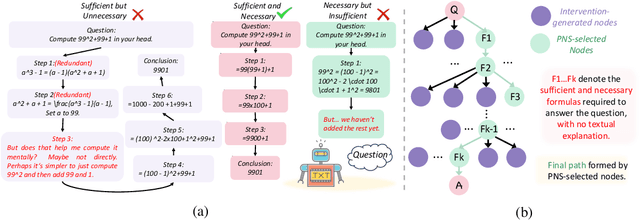
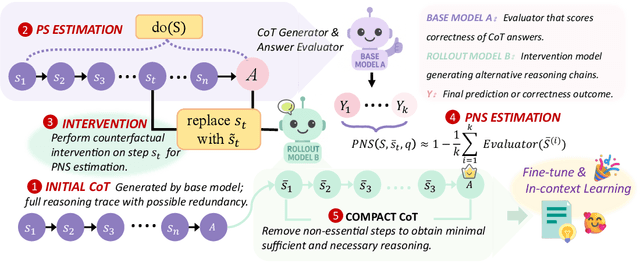
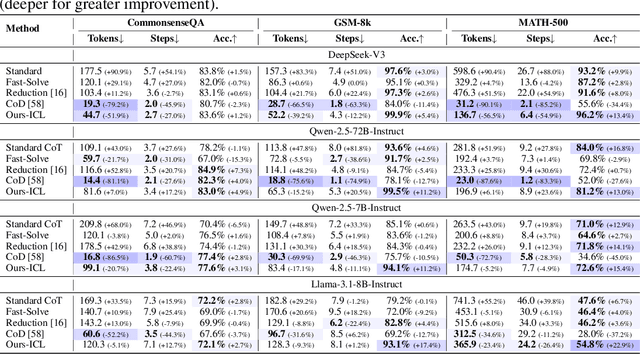
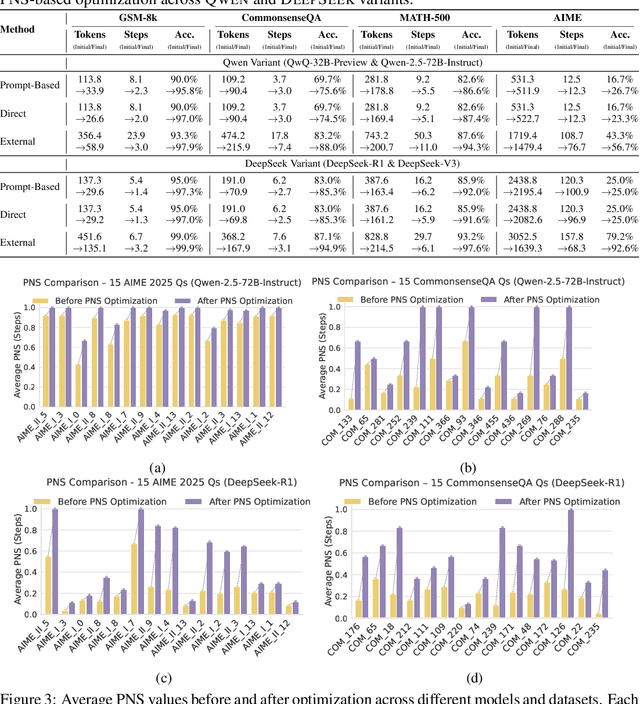
Abstract:Chain-of-Thought (CoT) prompting plays an indispensable role in endowing large language models (LLMs) with complex reasoning capabilities. However, CoT currently faces two fundamental challenges: (1) Sufficiency, which ensures that the generated intermediate inference steps comprehensively cover and substantiate the final conclusion; and (2) Necessity, which identifies the inference steps that are truly indispensable for the soundness of the resulting answer. We propose a causal framework that characterizes CoT reasoning through the dual lenses of sufficiency and necessity. Incorporating causal Probability of Sufficiency and Necessity allows us not only to determine which steps are logically sufficient or necessary to the prediction outcome, but also to quantify their actual influence on the final reasoning outcome under different intervention scenarios, thereby enabling the automated addition of missing steps and the pruning of redundant ones. Extensive experimental results on various mathematical and commonsense reasoning benchmarks confirm substantial improvements in reasoning efficiency and reduced token usage without sacrificing accuracy. Our work provides a promising direction for improving LLM reasoning performance and cost-effectiveness.
Bronchovascular Tree-Guided Weakly Supervised Learning Method for Pulmonary Segment Segmentation
May 20, 2025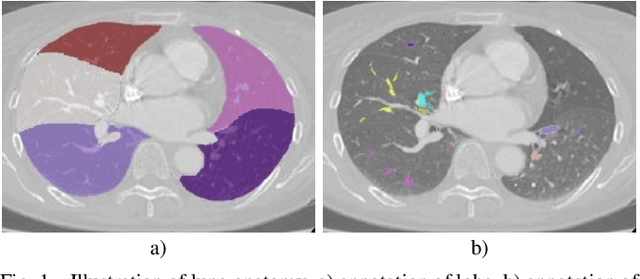

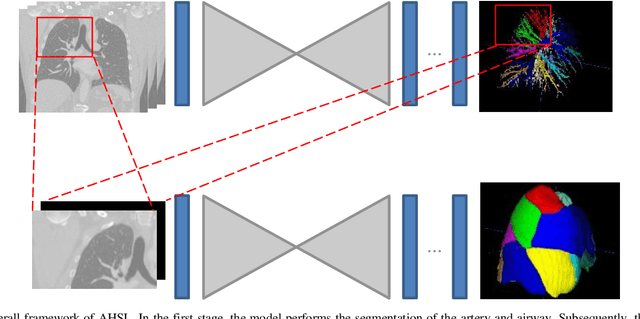
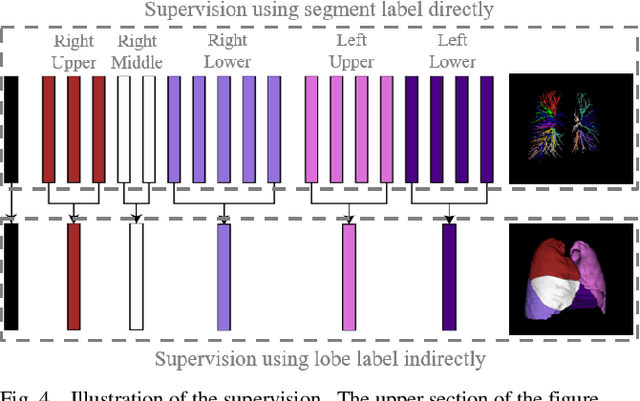
Abstract:Pulmonary segment segmentation is crucial for cancer localization and surgical planning. However, the pixel-wise annotation of pulmonary segments is laborious, as the boundaries between segments are indistinguishable in medical images. To this end, we propose a weakly supervised learning (WSL) method, termed Anatomy-Hierarchy Supervised Learning (AHSL), which consults the precise clinical anatomical definition of pulmonary segments to perform pulmonary segment segmentation. Since pulmonary segments reside within the lobes and are determined by the bronchovascular tree, i.e., artery, airway and vein, the design of the loss function is founded on two principles. First, segment-level labels are utilized to directly supervise the output of the pulmonary segments, ensuring that they accurately encompass the appropriate bronchovascular tree. Second, lobe-level supervision indirectly oversees the pulmonary segment, ensuring their inclusion within the corresponding lobe. Besides, we introduce a two-stage segmentation strategy that incorporates bronchovascular priori information. Furthermore, a consistency loss is proposed to enhance the smoothness of segment boundaries, along with an evaluation metric designed to measure the smoothness of pulmonary segment boundaries. Visual inspection and evaluation metrics from experiments conducted on a private dataset demonstrate the effectiveness of our method.
Machine learning for modelling unstructured grid data in computational physics: a review
Feb 13, 2025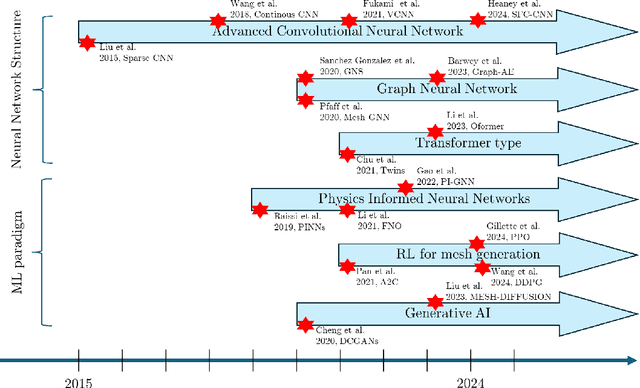

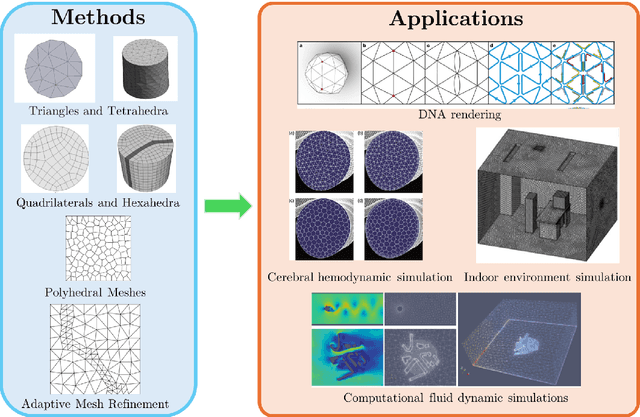

Abstract:Unstructured grid data are essential for modelling complex geometries and dynamics in computational physics. Yet, their inherent irregularity presents significant challenges for conventional machine learning (ML) techniques. This paper provides a comprehensive review of advanced ML methodologies designed to handle unstructured grid data in high-dimensional dynamical systems. Key approaches discussed include graph neural networks, transformer models with spatial attention mechanisms, interpolation-integrated ML methods, and meshless techniques such as physics-informed neural networks. These methodologies have proven effective across diverse fields, including fluid dynamics and environmental simulations. This review is intended as a guidebook for computational scientists seeking to apply ML approaches to unstructured grid data in their domains, as well as for ML researchers looking to address challenges in computational physics. It places special focus on how ML methods can overcome the inherent limitations of traditional numerical techniques and, conversely, how insights from computational physics can inform ML development. To support benchmarking, this review also provides a summary of open-access datasets of unstructured grid data in computational physics. Finally, emerging directions such as generative models with unstructured data, reinforcement learning for mesh generation, and hybrid physics-data-driven paradigms are discussed to inspire future advancements in this evolving field.
FairSort: Learning to Fair Rank for Personalized Recommendations in Two-Sided Platforms
Nov 30, 2024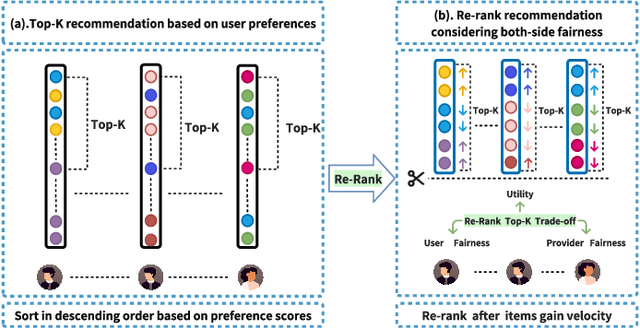


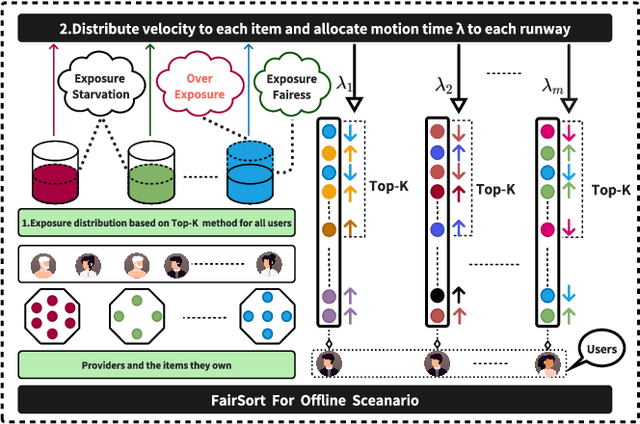
Abstract:Traditional recommendation systems focus on maximizing user satisfaction by suggesting their favorite items. This user-centric approach may lead to unfair exposure distribution among the providers. On the contrary, a provider-centric design might become unfair to the users. Therefore, this paper proposes a re-ranking model FairSort\footnote{\textbf{Reproducibility:}The code and datasets are available at \url{https://github.com/13543024276/FairSort}} to find a trade-off solution among user-side fairness, provider-side fairness, and personalized recommendations utility. Previous works habitually treat this issue as a knapsack problem, incorporating both-side fairness as constraints. In this paper, we adopt a novel perspective, treating each recommendation list as a runway rather than a knapsack. In this perspective, each item on the runway gains a velocity and runs within a specific time, achieving re-ranking for both-side fairness. Meanwhile, we ensure the Minimum Utility Guarantee for personalized recommendations by designing a Binary Search approach. This can provide more reliable recommendations compared to the conventional greedy strategy based on the knapsack problem. We further broaden the applicability of FairSort, designing two versions for online and offline recommendation scenarios. Theoretical analysis and extensive experiments on real-world datasets indicate that FairSort can ensure more reliable personalized recommendations while considering fairness for both the provider and user.
Computational Experiments Meet Large Language Model Based Agents: A Survey and Perspective
Feb 01, 2024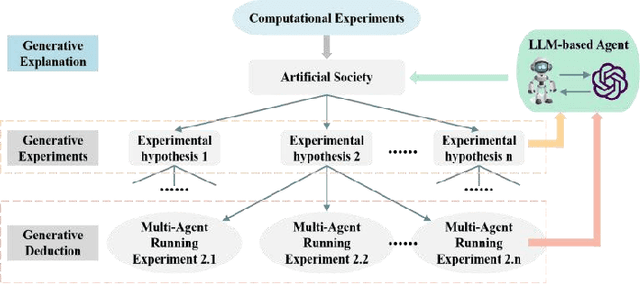
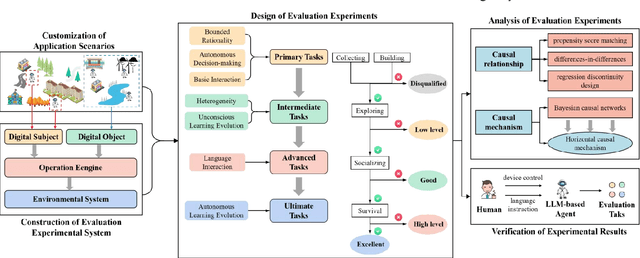
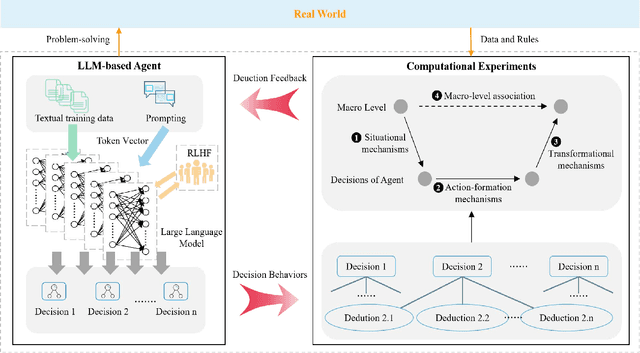
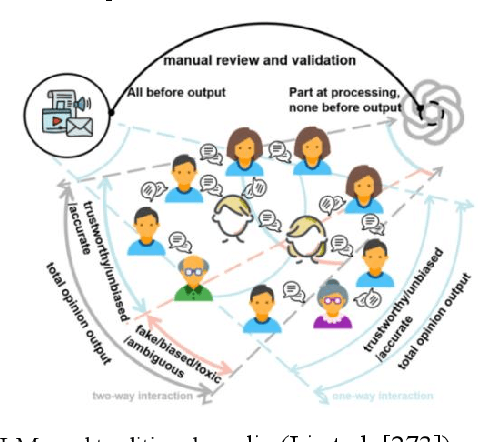
Abstract:Computational experiments have emerged as a valuable method for studying complex systems, involving the algorithmization of counterfactuals. However, accurately representing real social systems in Agent-based Modeling (ABM) is challenging due to the diverse and intricate characteristics of humans, including bounded rationality and heterogeneity. To address this limitation, the integration of Large Language Models (LLMs) has been proposed, enabling agents to possess anthropomorphic abilities such as complex reasoning and autonomous learning. These agents, known as LLM-based Agent, offer the potential to enhance the anthropomorphism lacking in ABM. Nonetheless, the absence of explicit explainability in LLMs significantly hinders their application in the social sciences. Conversely, computational experiments excel in providing causal analysis of individual behaviors and complex phenomena. Thus, combining computational experiments with LLM-based Agent holds substantial research potential. This paper aims to present a comprehensive exploration of this fusion. Primarily, it outlines the historical development of agent structures and their evolution into artificial societies, emphasizing their importance in computational experiments. Then it elucidates the advantages that computational experiments and LLM-based Agents offer each other, considering the perspectives of LLM-based Agent for computational experiments and vice versa. Finally, this paper addresses the challenges and future trends in this research domain, offering guidance for subsequent related studies.
 Add to Chrome
Add to Chrome Add to Firefox
Add to Firefox Add to Edge
Add to Edge